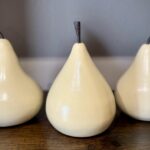Who knew such beauty could come from an unassuming beginning?
Even better? Bulbs are easy to plant and care for. Our area’s warm climate lets a wide variety of plant bulbs to thrive. With proper care, these plants will produce beautiful flowers year after year.
What Is a Bulb?
Bulbs are thick underground storage organs that help plants survive tough weather conditions, such as drought or cold. Bulbs are usually the plants’ reproductive organs as well.
Not all bulbous plants have true bulbs. Others have corms, tubers, tuberous roots, or rhizomes. In this case the expressions “bulb” and “bulbous plants” will refer to all bulbous plants, not just true bulbs.
Sunlight
Most bulbs thrive in a sunny location, but some (such as caladiums) do best in partial shade. Avoid planting bulbs in heavily shaded areas to prevent thin, spindly growth and poor flowering and foliage color.
Drainage
Bulbs require well-drained soil, so bed preparation is important. If the site does not drain properly, build raised beds filled with soil that has good drainage.
Soil
Till and amend the soil by adding a 3- to 4-inch layer of organic matter (such as peat, compost, or well-rotted manure) and 1 to 1 ½ pounds of 12-4-8 fertilizer or an equivalent amount of other complete fertilizers per 100 square feet of bed.
In order to have healthy plants and beautiful flowers, follow these general care recommendations:
• Control weeds through mulching.
• Fertilize with a complete fertilizer (12-4-8) once or twice during the growing season.
• Keep the soil around the bulbs moderately moist at all times (except when you are drying off bulbs at the end of the season).
• Remove dead blooms before they produce seeds. Seed set will reduce flowering the next season.
Some bulbs that do well in Florida:
Elephant Ears, Day Lilly, Caladium, Amaryllis, Dahlia and Spider Lily
Information provided by University of Florida IFAS Extension.





